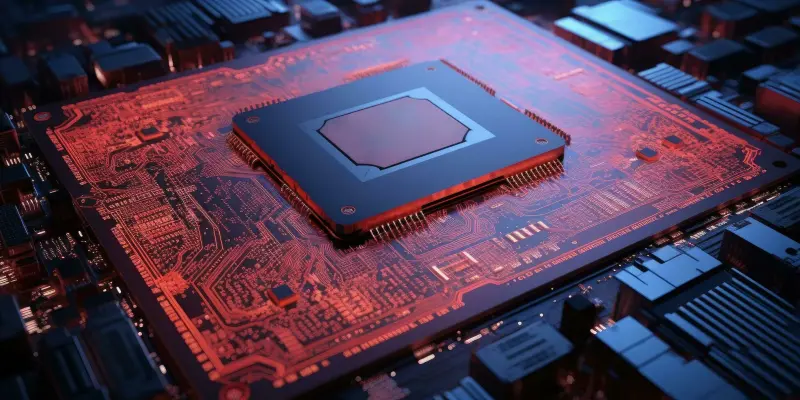The technology landscape continues to evolve, and AMD is at the forefront with its new Zen5-based Threadripper “Shimada Peak” CPUs. The upcoming Threadripper 9000 series has generated significant buzz, offering a range of models including 64-core, 16-core, and even a surprising 12-core variant. This diverse lineup caters to various computational needs and is set to replace the current Threadripper 7985WX processors. With architectural enhancements and peak thermal design power (TDP) levels around 350W, these CPUs promise notable performance improvements.
Lineup and Technical Specifications
Leading the lineup is the 64-core Ryzen Threadripper 9985WX, anticipated to feature an eight Core Complex Die (CCD) layout, with each CCD housing eight cores. This configuration underlines AMD’s commitment to delivering superior performance for demanding tasks. Complementing this high-end model is the 16-core Threadripper 9955WX, designed with a dual-CCD layout, 64 MB of L3 cache, and consistent TDP of 350W. This model targets users needing robust performance without fully maxing out on cores.
Another intriguing entry is the 12-core Threadripper 9945WX. This model is expected to showcase a potential four-CCD layout, each carrying three cores. Maintaining the same TDP of 350W, it positions itself as a unique offering for niche workloads. The Threadripper 9000 series will be available in configurations ranging from 12 to 96 cores, including 24, 32, and 64 cores, marking a significant step in versatility for various professional needs.
Both PRO and standard 9000 SKUs will support the TRX50 and WRX90 chipsets, respectively. There are circulating rumors regarding the potential inclusion of 3D V-Cache technology. This feature, although not entirely clear in details, could further enhance performance by improving cache efficiency. As industry insiders expect, these advancements would establish the new Threadripper 9000 series as a benchmark for high-end workstations.
Industry Positioning and Future Outlook
The announcement at Computex reaffirms AMD’s position as a key player in the high-performance CPU market. With an expected official unveiling in the second half of 2025, the “Shimada Peak” generation aims to succeed previous lines such as “Storm Peak” and “Chagall.” Anticipations are high for these new CPUs to bring improvements in CPU cores, threads, process nodes, and cache sizes, keeping in line with the industry’s trends for innovation and enhanced capabilities. Moreover, AMD’s consistent pattern of maintaining high PCIe lane support and aligning TDP levels further demonstrates their commitment to performance optimization. The comprehensive range of SKUs signifies AMD’s strategic move to address a broad spectrum of users, from high-end workstation operators to those with moderate computational requirements. This flexibility in offerings ensures that a wide array of use cases are covered, enhancing productivity across different industries. AMD’s dedication to advancing CPU technology is evident in the diverse options provided within the Threadripper 9000 series. As these processors enter the market, they are set to deliver substantial architectural advancements while adhering to the high standards set by their predecessors. The anticipated impact of these CPUs on the industry suggests a consistent trajectory of growth and innovation for AMD, ensuring their continued relevance and competitiveness in the CPU market.
Conclusion and Future Implications
The technology landscape is rapidly evolving, and AMD stands out with its innovative Zen5-based Threadripper “Shimada Peak” CPUs. The anticipation surrounding the upcoming Threadripper 9000 series is palpable, offering a range of models to meet various computational requirements, including 64-core, 16-core, and even a surprising 12-core variant. This diverse product lineup is poised to replace the existing Threadripper 7985WX processors, providing upgraded architectural features and thermal design power (TDP) levels peaking around 350W. These enhancements are set to deliver significant performance boosts, making the Threadripper 9000 series a noteworthy advancement in AMD’s CPU offerings. Designed for everything from critical computations to high-performance tasks, the new series reaffirms AMD’s commitment to pushing the envelope of processor capabilities. As technology continues to evolve at a breakneck pace, AMD’s Zen5-based Threadripper CPUs are a testament to their relentless pursuit of excellence and innovation in the ever-competitive tech industry.

